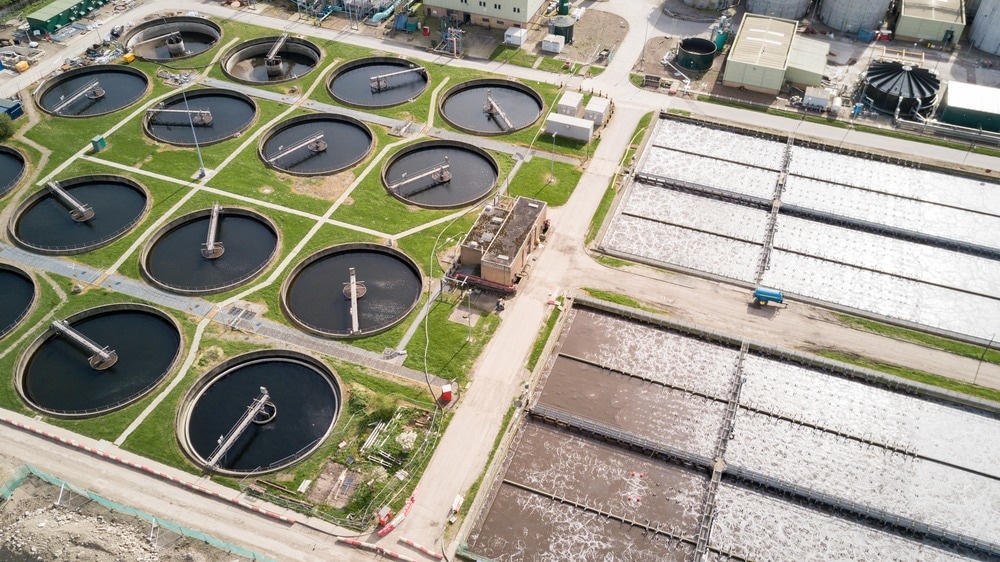A recent review article published in the journal Energies comprehensively explored how solar concentrators can enhance the efficiency of photocatalytic wastewater treatment. The researchers examined the fundamentals of solar concentration and its ability to significantly improve photocatalytic processes.

Image Credit: pxl.store/Shutterstock.com
Background
Water pollution has increased due to industrialization and urbanization, with agricultural runoff, untreated sewage, and toxic industrial discharges being major contributors. Conventional wastewater treatment methods can create secondary pollution or require high energy, making them costly. In this context, photocatalysis has emerged as a sustainable and eco-friendly solution, utilizing solar energy to degrade and remove various types of organic and inorganic pollutants in the water.
Photocatalysis involves using semiconductor materials like titanium dioxide (TiO2) and zinc oxide (ZnO) that generate electron-hole pairs when exposed to light. These charge carriers trigger redox reactions, creating highly reactive hydroxyl and superoxide radicals, which effectively degrade pollutants. However, the efficiency of the photocatalysis process depends on the light intensity, as more photons result in more radicals and faster pollutant breakdown.
About the Review
In this study, the authors focused on the role of solar concentrators in enhancing photocatalysis for wastewater treatment. Solar energy is the most abundant renewable energy source globally, with the sun providing approximately 1.5 × 1018 kWh of energy annually, which is over a hundred times the combined reserves of fossil fuels. Hence, the researchers explored different cost-effective ways to harness this energy, identifying solar concentrator systems as promising solutions.
Solar concentrators collect and focus sunlight on smaller areas, increasing irradiance power. These devices typically include mirrors or lenses, a receiver, and a tracking system. Common designs include parabolic mirrors and Fresnel lenses, which concentrate sunlight onto a focal point. The review highlighted several concentrator models, such as parabolic dish collectors, compound parabolic collectors, and the extremely concentrated solar energy delivery system (ECoSEnDS).
The researchers tested the ECoSEnDS system, which uses silica optical fibers to deliver concentrated sunlight to a photocatalytic reactor. This system, designed to minimize energy loss and enhance energy transfer, increased sunlight irradiance by up to 30 suns. The study evaluated its effectiveness in degrading methylene blue dye using bismuth vanadate (BiVO4) nanoparticles, known for their strong photocatalytic activity. The experiment exposed the dye solution to different sunlight levels, tracking the degradation over 60 minutes. Additionally, the authors assessed how varying ECoSEnDS parameters, such as fiber length and curvature, affected the degradation rates.
Key Findings
The outcomes showed that the ECoSEnDS system significantly enhanced the efficiency of photocatalytic wastewater treatment. At a solar irradiance of 300 mW/cm², the dye degradation rate reached 71% in 60 minutes, five times faster than natural sunlight. The authors attributed this increased performance to increased electron-hole pair generation, leading to the formation of more reactive species that degrade pollutants.
Additionally, the ECoSEnDS system performed effectively under varying solar irradiance levels, making it adaptable to different conditions. The study also compared the performance of other concentrators, such as parabolic troughs and compound parabolic collectors, in degrading pollutants like benzophenone and malachite green. These systems achieved high degradation rates, with some completely breaking down the contaminants, but the ECoSEnDS system consistently delivered superior degradation efficiency.
Applications
Integrating solar concentrators with photocatalytic water treatment has significant real-world potential. This technology offers a sustainable and cost-effective solution for large-scale wastewater treatment. The ECoSEnDS system’s use of optical fibers to deliver concentrated sunlight allows customized and optimized treatment setups. Its scalability and compatibility with existing infrastructure make it a good option for upgrading current facilities. This technology can help reduce the environmental impact of wastewater treatment by lowering energy use and promoting water reuse.
Conclusion
In summary, the review highlighted the potential of solar concentrators to enhance the efficiency of photocatalytic wastewater treatment processes. The ECoSEnDS system, in particular, showed promise as a novel and innovative technology for delivering highly concentrated sunlight to the photocatalytic reactor. The study's findings have significant implications for developing sustainable and cost-effective wastewater treatment technologies.
The authors suggested that future work should focus on optimizing solar concentrator designs and scaling up the technology for practical use.
Disclaimer: The views expressed here are those of the author expressed in their private capacity and do not necessarily represent the views of AZoM.com Limited T/A AZoNetwork the owner and operator of this website. This disclaimer forms part of the Terms and conditions of use of this website.
Source:
Roy, J.S.; Messaddeq, Y. The Role of Solar Concentrators in Photocatalytic Wastewater Treatment. Energies 2024, 17, 4001. DOI: 10.3390/en17164001, https://www.mdpi.com/1996-1073/17/16/4001